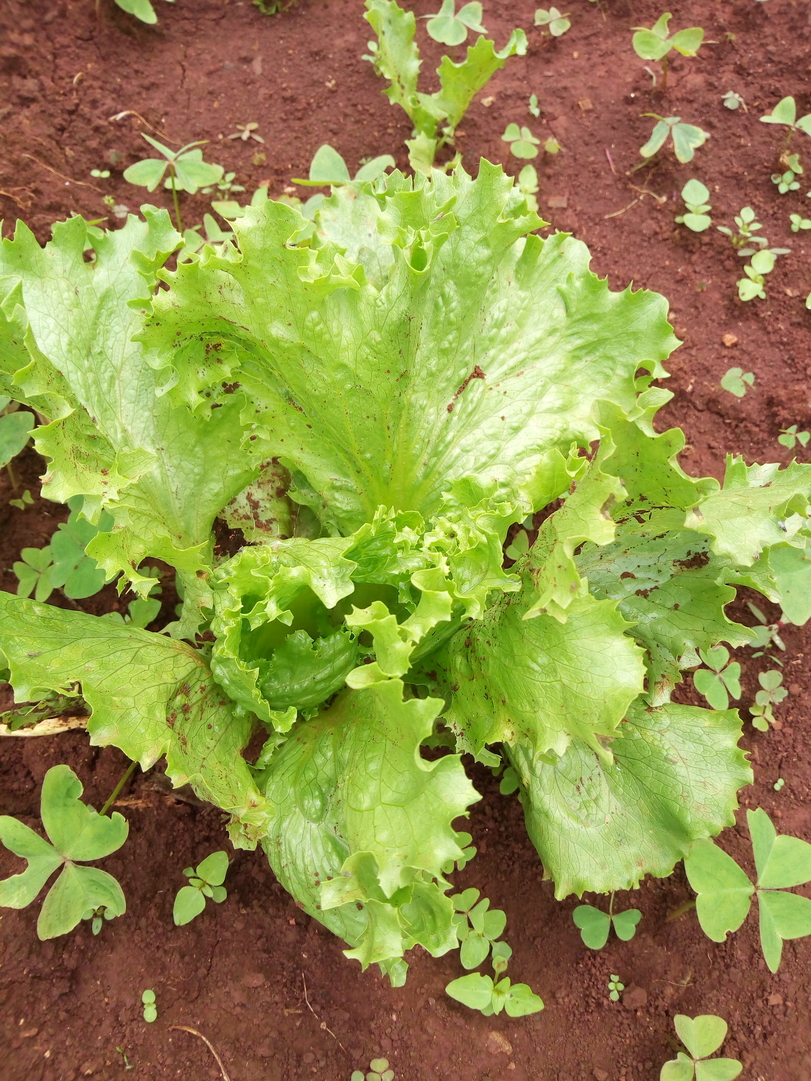
One of the lettuce plant found in Kenneth's farm. He grow the leafy vegetable and supplies to hotels and restaurants in Nairobi. Photo: Oyugi Zablon.
A vegetable farmer in Lower Kabete, a modern residential area located about 10 Kilometers from Nairobi Central Business District is growing non-headed lettuce also known as looseleaf, cutting or bunching lettuce which is in high demand by major hotels and restaurants in the city due to its wide range of usage as compared to headed lettuce.
Looseleaf lettuce is most often used for salads and in other kinds of food, such as soups, sandwiches and wraps. It can also be grilled and is a rich source of vitamin K and A, and a moderate source of folate and iron, according to Food and Nutrition Series by Colorado State University in the US.
Kenneth Gikinya has been growing the vegetable within his quarter acre piece of plot for over five years now and he says he is encouraged by the fact that he never misses market owing the close proximity of his farm and Nairobi CBD.
“What does not bother me is the market for my crops. Right now I have over 10 contacts of traders from City Market and Ngara Market who keep calling to know when I am harvesting. I also have three suppliers of vegetables to some big hotels and restaurants in Nairobi who have asked me to inform them when the crops are ready,” said Kenneth.
Lettuce is mainly used in the hotels and restaurants for preparing salads. However, there is little acceptance and consumption at household level in Kenya. He sells each piece at 20 shillings and 25 when the market demand is even higher.
Currently he has a total of 1000 plants awaiting maturity in about three weeks meaning he will be pocketing Sh20,000 in about a month or so. He also grows onions, broccoli, celery and kales a venture which gives him a total of about Sh80,000 a season.
RELATED ARTICLE: Supplier makes over Sh50,000 weekly as demand for vegetables surges
RELATED ARTICLE: Limuru farmer hacks vegetable market with Chinese cabbages
RELATED ARTICLE: Company provides platform for farmers to sell vegetables in Nairobi shopping malls
Lettuce does well at relatively cool temperatures and requires ample sunlight, uniformly cool nights, and plenty of moisture in the soil for well developed, solid heads. According to Kenneth, the crops does not need any fertilizer but steady irrigation during dry seasons.
“I get my water cheaply from this river (pointing at a spring that separates Kibichiku and Gathiga) for irrigating as I have to keep the soil moist for the crop to thrive,” he said.
Optimum temperatures for lettuce growth are 18.8– 22.70C during the day and 7.2–110C at night. High temperatures generally above 290C are conducive to early flowering resulting in low quality and bitter flavour.
At temperatures above 23.80C, firm heads are difficult to obtain, and stems tend to elongate. Plants will withstand freezing, but below 7.20C, growth is extremely slow. Lettuce can be grown on a wide range of soil types, depending on irrigation, drainage, and local climatic conditions. The soil pH should be 6.5-7.2.
















Comments powered by CComment